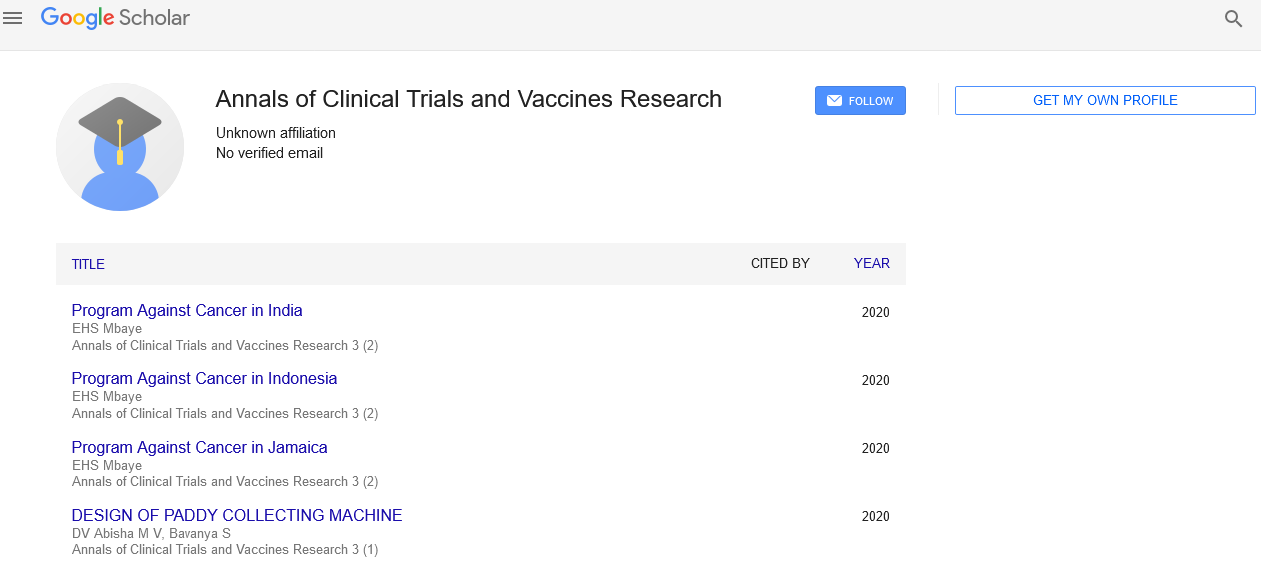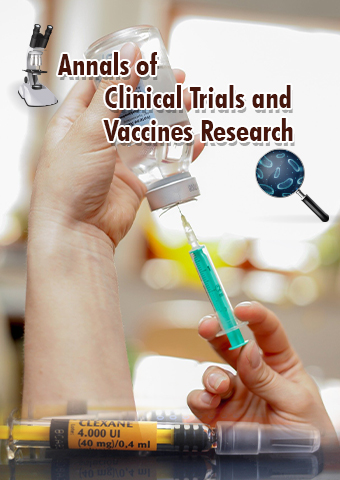Perspective - Annals of Clinical Trials and Vaccines Research (2024) Volume 14, Issue 6
DNA Construction Limitations: Challenges and Insights
- Corresponding Author:
- Robert Atkinson
Department of Biotechnology, University of Nieuwpoort, Nieuwpoort, Netherlands
E-mail: Atkinrob@gmail.com
Received: 27-Nov-2024, Manuscript No. ACTVR-24-153389; Editor assigned: 02-Dec-2024, Pre QC No. ACTVR-24-153389 (PQ); Reviewed: 16-Dec-2024, QC No. ACTVR-24-153389; Revised: 21-Dec-2024, Manuscript No. ACTVR-24-153389 (R); Published: 28-Dec-2024, DOI: 10.37532/ACTVR.2024.14(6).286-287
Introduction
Clinical trials are the cornerstone of medical research, paving the way for groundbreaking treatments and therapies. Among the various phases of clinical trials, Phase 3 holds particular significance as it determines the efficacy, safety, and overall benefits of a potential intervention before it reaches the market. In this article, we delve into the intricacies of Phase 3 clinical trials, unraveling their importance, methodologies and impact on shaping modern medicine.
Description
Technical challenges in DNA construction
Accuracy in synthesis: DNA synthesis, the initial step in constructing DNA, often struggles with fidelity. Current chemical synthesis techniques, such as phosphoramidite chemistry, are prone to introducing errors, particularly as the sequence length increases. Errors such as deletions, insertions, or substitutions can lead to faulty constructs, requiring additional resources for verification and correction.
Assembly complexity: Assembling large DNA fragments requires seamless joining of smaller oligonucleotides, typically using methods like Gibson assembly or Golden Gate cloning. However, these techniques face efficiency issues with constructs exceeding several kilobases, resulting in low yields and high error rates. Moreover, repetitive sequences in DNA can complicate assembly due to misalignment or recombination events.
Scalability: The scalability of DNA construction is limited by current technology. Large-scale projects, such as synthesizing entire genomes, require significant time, cost, and technical expertise. The synthesis of large constructs (megabase-scale DNA) is further constrained by the capabilities of current sequencing and assembly tools.
Integration and stability: Introducing synthetic DNA into host organisms poses challenges related to integration and stability. Synthetic constructs may not integrate efficiently into a host genome or may suffer from instability over time, leading to unintended mutations or loss of function. This is especially problematic for applications requiring long-term genetic modification.
Biological barriers in DNA construction
Host compatibility: One of the primary limitations is the compatibility of synthetic DNA with the host organism. Codon usage, regulatory elements, and structural features of synthetic constructs may not align with the host’s transcriptional and translational machinery, leading to poor expression or functionality.
Unintended interactions: Synthetic DNA can interact unpredictably with a host’s endogenous genome, potentially disrupting native gene regulation or triggering immune responses. Horizontal gene transfer and unintended activation of latent genetic elements are additional concerns.
Evolutionary constraints: DNA constructs are subject to evolutionary pressures within host organisms, which can lead to mutations that compromise their intended function. Such constraints are particularly pronounced in long-term applications, such as gene therapies or biomanufacturing.
Ethical and regulatory constraints
Ethical concerns: The ability to construct and modify DNA raises ethical questions about the extent of human intervention in natural processes. Concerns about creating synthetic life forms or modifying the human germline evoke debates over the moral and societal implications of such advancements.
Regulatory hurdles: Regulations surrounding synthetic DNA are often ambiguous or inconsistent across regions, creating uncertainty for researchers and developers. The potential misuse of synthetic biology, such as in bioterrorism, has prompted strict oversight, which can stifle innovation.
Intellectual property issues: The field of DNA construction is riddled with patent disputes over techniques, sequences, and applications. These disputes can delay research and limit accessibility to essential technologies.
Emerging solutions to overcome limitations
Enhanced synthesis techniques: Newer technologies, such as enzymatic DNA synthesis, are being developed to improve the accuracy and scalability of DNA construction. These methods promise to reduce errors and costs while enabling longer constructs.
Improved assembly protocols: Innovations in assembly techniques, including the use of novel enzymes and high-throughput automation, are addressing issues of scalability and efficiency. Tools like CRISPR have also streamlined the integration of synthetic DNA into genomes.
Host engineering: Engineering host organisms to better accommodate synthetic DNA is an area of active research. Optimizing host genomes for compatibility, stability, and reduced immune responses can significantly enhance the functionality of synthetic constructs.
Computational design tools: Advanced bioinformatics tools and machine learning algorithms are enabling the design of error-free DNA sequences tailored to specific applications. These tools predict potential challenges in synthesis and assembly, reducing trial-and-error experimentation.
Ethical frameworks and policies: Developing comprehensive ethical guidelines and regulatory frameworks can address societal concerns while fostering innovation. Initiatives such as the “Biosecurity Code of Conduct” aim to mitigate risks associated with DNA construction.
Conclusion
DNA construction is a transformative tool with vast implications for science, medicine, and industry. However, its limitations in accuracy, scalability, biological compatibility, and ethical acceptance present challenges that must be addressed. By leveraging emerging technologies and fostering interdisciplinary collaboration, the barriers to DNA construction can be surmounted, unlocking its full potential for societal benefit.

